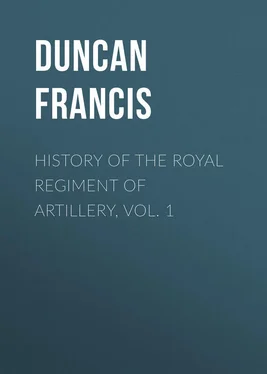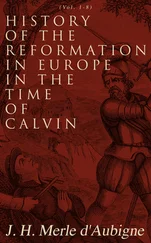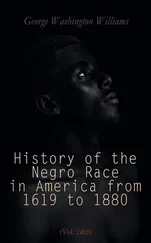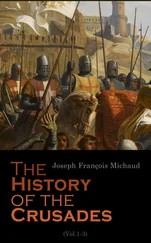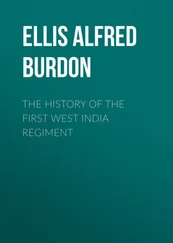Francis Duncan - History of the Royal Regiment of Artillery, Vol. 1
Здесь есть возможность читать онлайн «Francis Duncan - History of the Royal Regiment of Artillery, Vol. 1» — ознакомительный отрывок электронной книги совершенно бесплатно, а после прочтения отрывка купить полную версию. В некоторых случаях можно слушать аудио, скачать через торрент в формате fb2 и присутствует краткое содержание. Жанр: foreign_antique, foreign_prose, на английском языке. Описание произведения, (предисловие) а так же отзывы посетителей доступны на портале библиотеки ЛибКат.
- Название:History of the Royal Regiment of Artillery, Vol. 1
- Автор:
- Жанр:
- Год:неизвестен
- ISBN:нет данных
- Рейтинг книги:4 / 5. Голосов: 1
-
Избранное:Добавить в избранное
- Отзывы:
-
Ваша оценка:
- 80
- 1
- 2
- 3
- 4
- 5
History of the Royal Regiment of Artillery, Vol. 1: краткое содержание, описание и аннотация
Предлагаем к чтению аннотацию, описание, краткое содержание или предисловие (зависит от того, что написал сам автор книги «History of the Royal Regiment of Artillery, Vol. 1»). Если вы не нашли необходимую информацию о книге — напишите в комментариях, мы постараемся отыскать её.
History of the Royal Regiment of Artillery, Vol. 1 — читать онлайн ознакомительный отрывок
Ниже представлен текст книги, разбитый по страницам. Система сохранения места последней прочитанной страницы, позволяет с удобством читать онлайн бесплатно книгу «History of the Royal Regiment of Artillery, Vol. 1», без необходимости каждый раз заново искать на чём Вы остановились. Поставьте закладку, и сможете в любой момент перейти на страницу, на которой закончили чтение.
Интервал:
Закладка:
For two years the appointment remained vacant, but in 1714 it was again conferred upon
John, now Duke of Marlborough, who held it until his death, in 1722. He was succeeded, as follows, by
William, Earl of Cadogan, on 22nd June, 1722, and by
John, Duke of Argyle and Greenwich, on 3rd June 1725.
At this period there is an unaccountable confusion among the various authorities. The 'British Chronologist' and the 'Biographia Britannica' make the list run as follows: – The Duke of Argyle and Greenwich was succeeded, in 1740, by John, Duke of Montague, and resumed office again, for three weeks, in 1742, when, for the last time, he resigned all his appointments, being again succeeded by the same Duke of Montague, who continued to hold the office until 1749, when he died.
'Grose's List,' on the other hand, makes the Duke of Argyle's tenure of office expire in 1730, instead of 1740, and makes no allusion to his brief resumption of the appointment in 1742, and 'Kane's List' has followed this. It is possible that for the brief period that he was in office the second time, no letters patent were issued for his appointment, which would account for its omission in most lists; but the difference of ten years in the duration of the first appointment is more difficult to account for. There is no doubt that, in 1740, the Duke of Argyle resigned all his appointments for the first time, but it is not stated whether the Master-Generalship was one, although it has been assumed. On the other hand, he might have been away during these ten years to a great extent, or allowed his officers of the Ordnance to sign warrants, thus giving an impression to the casual student that he no longer held office. The manuscript in the Royal Artillery Library, already referred to, bears marks of such careful research, that one is disposed to adopt its reading of the difficulty, which is different from that taken by Grose's and Kane's Lists, and agrees with the other works mentioned above.
After the death of the Duke of Montague, the office remained vacant until the end of 1755, when it was conferred upon
Charles, Duke of Marlborough, who held it until his death, on 20th October, 1758.
During the vacancy immediately preceding the appointment of the last-named Master-General, Sir J. Ligonier had been appointed Lieutenant-General of the Ordnance, and for four years had performed the duties of both appointments, – acted as Colonel of the Royal Artillery, and Captain of the Cadet Company. A few months after the death of the Duke of Marlborough – namely, on the 3rd July, 1759 – he was appointed Master-General, being by this time
Field-Marshal Viscount Ligonier. He was succeeded, on the 14th May, 1763, by
John, Marquis Granby, who held it until 17th January, 1770, when we find that he resigned all his appointments, except the command of the Blues. For nearly two years the office remained vacant, and on the 1st October, 1772, it was conferred upon
George, Viscount Townshend, whose tenure of office extended over nearly the whole of that anxious period in the history of England which included such episodes as the American War of Independence and the great Siege of Gibraltar. The sequence of the remaining Masters may be taken from Kane's List, and is as follows: —
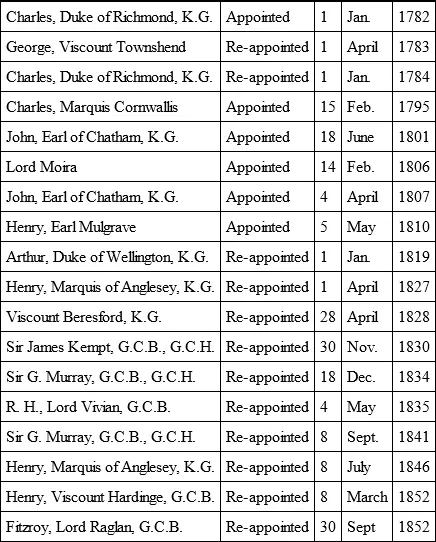
On the abolition of the Board of Ordnance, the command of the Royal Artillery was given to the Commander-in-Chief of the Forces at that time,
Field-Marshal Viscount Hardinge, G.C.B. His successor (appointed Colonel of the Royal Artillery on the 10th May, 1861, and at this date holding that office) was
H.R.H. the Duke of Cambridge, K.G., &c. &c., now Field-Marshal Commanding-in-Chief.
CHAPTER II.
The Infancy of Artillery in England
The term Ordnance was in use in England before cannon were employed; and it included every description of warlike weapon. The artificers employed in the various permanent military duties were called officers of the Ordnance.
The first record of cannon having been used in the field dates from Henry III.; and with the increasing skill of the founders the use of cannon speedily became more general. But the moral influence of the guns was far beyond their deserts. They were served in the rudest way, and their movements in the field and in garrison were most uncertain, yet they were regarded with superstitious awe, and received special names, such as "John Evangelist," the "Red Gun," the "Seven Sisters," "Mons Meg," &c. In proportion to the awe which they inspired was the inadequate moral effect produced on an army by the loss of its artillery, or by the capture of its enemy's guns.
In the earliest days cannon were made of the rudest materials, – of wood, leather, iron bars, and hoops; but as time went on guns of superior construction were imported from France and Holland. The first mention of the casting in England of "great brass cannon and culverins" is in the year 1521, when one John Owen began to make them, "the first Englishman that ever made that kind of Artillery in England." The first iron guns cast in this country were made by three foreigners at Buckstead in Sussex, in the year 1543. In this same year, the first shells were cast, for mortars of eleven inches calibre, described as "certain hollow shot of cast iron, to be stuffed with fireworks, whereof the bigger sort had screws of iron to receive a match, and carry fire to break in small pieces the same hollow shot, whereof the smallest piece hitting a man would kill or spoil him." The following table 2 2 This table is reproduced from the MSS. of the late Colonel Cleaveland.
gives the names, weights, and charges of the guns which were in general use in the year 1574. There were, in addition to these, guns called Curtals or Curtaux, Demicurtaux, and Bombards: —
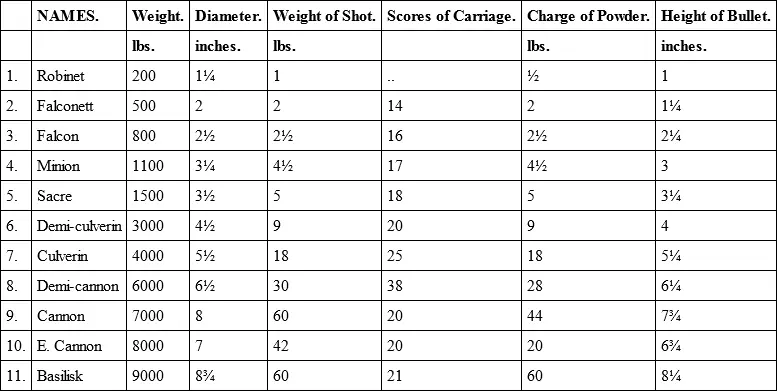
Among the earliest occasions recorded of the use of Artillery by the English, were the campaigns in Scotland of Edward II. and Edward III.; the capture of Berwick by the latter monarch in 1333; his campaigns in Flanders and France in 1338-39-40; his siege of Vannes in 1343; his successful raid in Normandy in 1346; the battle of Cressy on the 26th August in that year, when the fire of his few pieces of cannon is said to have struck a panic into the enemy; the expedition to Ireland in 1398; Henry IV.'s defeat of the French in Wales, in 1400; another successful siege of Berwick in 1405; the capture of Harfleur in 1415; and the battle of Agincourt on the 25th October of that year; the sieges of Tongue and Caen in 1417; of Falaise and other towns in Normandy in 1418; concluding with the capitulation of Cherbourg and Rouen after protracted sieges, stone projectiles being thrown from the cannon with great success; the engagements between Edward IV. and Warwick, when Artillery was used on both sides; the expedition to France in 1474, and to Scotland in 1482, when yet another successful siege of Berwick took place, successful mainly owing to the Artillery employed by the besieging force; the capture of Sluis, in Flanders; and the attack on Calais and Boulogne in 1491. In the sixteenth century may be enumerated the expedition to Flanders in 1511, in aid of the Duchess of Savoy; the Siege of Térouenne and Battle of the Spurs in 1513; the Siege of Tournay; the Battle of Flodden Field, where the superior accuracy of the English Artillery rendered that of the Scotch useless; the descent on the coast of France and capture of Morlies in 1523; the Siege of Bray and Montedier in 1524; the siege of Boulogne in 1544; the expedition to Cadiz under the Earl of Essex in 1596, and that to the Azores in 1597. In the next century, daring the Civil War, and in all Cromwell's expeditions, the use of Artillery was universal; and the part of the century after the Restoration will be alluded to in a subsequent chapter.
Читать дальшеИнтервал:
Закладка:
Похожие книги на «History of the Royal Regiment of Artillery, Vol. 1»
Представляем Вашему вниманию похожие книги на «History of the Royal Regiment of Artillery, Vol. 1» списком для выбора. Мы отобрали схожую по названию и смыслу литературу в надежде предоставить читателям больше вариантов отыскать новые, интересные, ещё непрочитанные произведения.
Обсуждение, отзывы о книге «History of the Royal Regiment of Artillery, Vol. 1» и просто собственные мнения читателей. Оставьте ваши комментарии, напишите, что Вы думаете о произведении, его смысле или главных героях. Укажите что конкретно понравилось, а что нет, и почему Вы так считаете.
